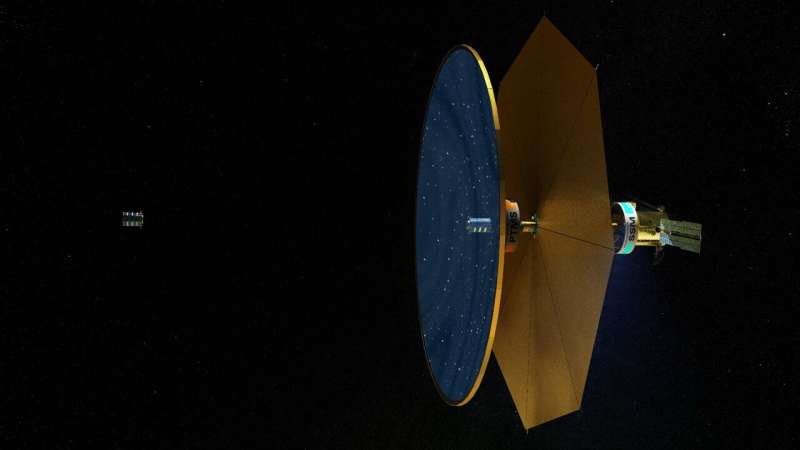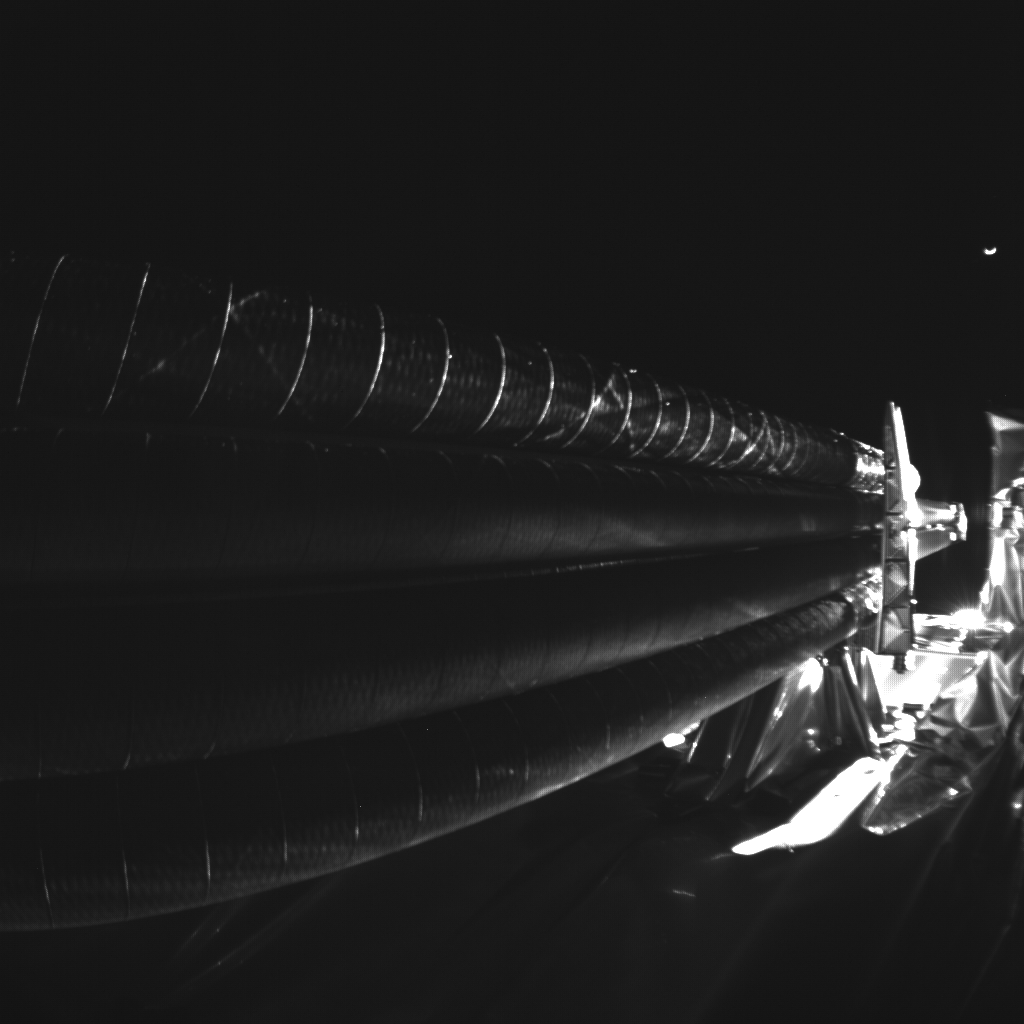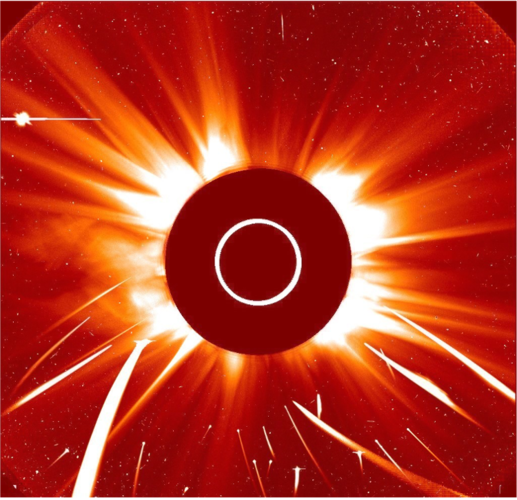
Copernical Team
What is the Fluidic Telescope?

The Fluidic Telescope (FLUTE) project team, jointly led by NASA and Technion–Israel Institute of Technology, envisions a way to make huge circular self-healing mirrors in-orbit to further the field of astronomy.
UAE astronaut exits ISS for first Arab space walk

Emirati astronaut Sultan Alneyadi stepped out of the International Space Station (ISS) Friday for the first space walk by an Arab astronaut, a moment touted by the UAE as a "milestone".
Alneyadi, 41, dubbed the "Sultan of Space" by his alma mater, become the first Arab astronaut to embark on a six-month space mission when he blasted off for the ISS in early March aboard a SpaceX Falcon 9 rocket.
On Friday, he undertook "the first Arab spacewalk in history," wearing a space suit that bears the Emirati flag, said the United Arab Emirates' Mohammed bin Rashid Space Centre (MBRSC), calling it "a new historic milestone".
Footage live-streamed by NASA showed the UAE astronaut exiting an ISS hatch.
"Sultan Alneyadi has egressed the hatch, the first ever space walk by an Arab astronaut," NASA said.
The space walk will last for around six hours and thirty minutes, according to MBRSC and NASA.
Alongside NASA's Stephen Bowen, Alneyadi will "change the Radio Frequency Group unit and prepare for the installation of solar panels," the Emirati astronaut said in a Twitter post carried by the official WAM news agency.
Work continues to deploy Juice RIME antenna

Juice’s ice-penetrating RIME antenna has not yet been deployed as planned. During the first week of commissioning, an issue arose with the 16-metre-long Radar for Icy Moons Exploration (RIME) antenna, which is preventing it from being released from its mounting bracket.
Week in images: 24-28 April 2023

Week in images: 24-28 April 2023
Discover our week through the lens
Raytheon unveils next-gen intelligent electro-optical sensing capability
 Raytheon Technologies (NYSE: RTX) has announced the launch of RAIVEN, a revolutionary electro-optical intelligent-sensing capability, which will enable pilots to have faster and more precise threat identification.
RAIVEN can identify objects optically and spectrally simultaneously in real-time - a single electro-optical/infrared, or EO/IR, system has never been able to do this before.
Raytheon Technologies (NYSE: RTX) has announced the launch of RAIVEN, a revolutionary electro-optical intelligent-sensing capability, which will enable pilots to have faster and more precise threat identification.
RAIVEN can identify objects optically and spectrally simultaneously in real-time - a single electro-optical/infrared, or EO/IR, system has never been able to do this before. China to promote space science progress on five themes
 China is planning to promote its space science development on five major themes, including research on habitable planets, and biological and physical sciences in space, a senior Chinese space expert said Tuesday.
China is making a national plan suggesting the deployment of more scientific satellites in the country's space program to yield leading breakthroughs globally on themes such as th
China is planning to promote its space science development on five major themes, including research on habitable planets, and biological and physical sciences in space, a senior Chinese space expert said Tuesday.
China is making a national plan suggesting the deployment of more scientific satellites in the country's space program to yield leading breakthroughs globally on themes such as th Space exploration for betterment of humankind
 Monday marked China's eighth Space Day, a day to celebrate the country's achievements in space exploration and research, and ponder how to carry forward the spirit of space exploration for the benefit of humankind.
China designated April 24 as Space Day in 2016 to mark the launch of the country's first satellite, Dongfanghong 1 on the same day in 1970.
As the backbone of the air spac
Monday marked China's eighth Space Day, a day to celebrate the country's achievements in space exploration and research, and ponder how to carry forward the spirit of space exploration for the benefit of humankind.
China designated April 24 as Space Day in 2016 to mark the launch of the country's first satellite, Dongfanghong 1 on the same day in 1970.
As the backbone of the air spac China to develop satellite constellation for deep space exploration
 China will develop a satellite constellation named Queqiao, or Magpie Bridge, to provide communications, navigation and remote-sensing services for deep space exploration, according to a senior Chinese space expert.
Speaking at the First International Deep Space Exploration Conference held in Hefei, the capital of east China's Anhui Province, Wu Yanhua, chief designer of the major project
China will develop a satellite constellation named Queqiao, or Magpie Bridge, to provide communications, navigation and remote-sensing services for deep space exploration, according to a senior Chinese space expert.
Speaking at the First International Deep Space Exploration Conference held in Hefei, the capital of east China's Anhui Province, Wu Yanhua, chief designer of the major project Pentagon leaks suggest China developing ways to attack satellites
 The recent leak of Pentagon documents included the suggestion that China is developing sophisticated cyber attacks for the purpose of disrupting military communication satellites. While this is unconfirmed, it is certainly possible, as many sovereign nations and private companies have considered how to protect from signal interference.
Nearly every aspect of our lives is enabled by satelli
The recent leak of Pentagon documents included the suggestion that China is developing sophisticated cyber attacks for the purpose of disrupting military communication satellites. While this is unconfirmed, it is certainly possible, as many sovereign nations and private companies have considered how to protect from signal interference.
Nearly every aspect of our lives is enabled by satelli Asteroid's comet-like tail is not made of dust, solar observatories reveal
 A weird asteroid has just gotten a little weirder.
We have known for a while that asteroid 3200 Phaethon acts like a comet. It brightens and forms a tail when it's near the Sun, and it is the source of the annual Geminid meteor shower, even though comets are responsible for most meteor showers. Scientists had blamed Phaethon's comet-like behavior on dust escaping from the asteroid as it's
A weird asteroid has just gotten a little weirder.
We have known for a while that asteroid 3200 Phaethon acts like a comet. It brightens and forms a tail when it's near the Sun, and it is the source of the annual Geminid meteor shower, even though comets are responsible for most meteor showers. Scientists had blamed Phaethon's comet-like behavior on dust escaping from the asteroid as it's 